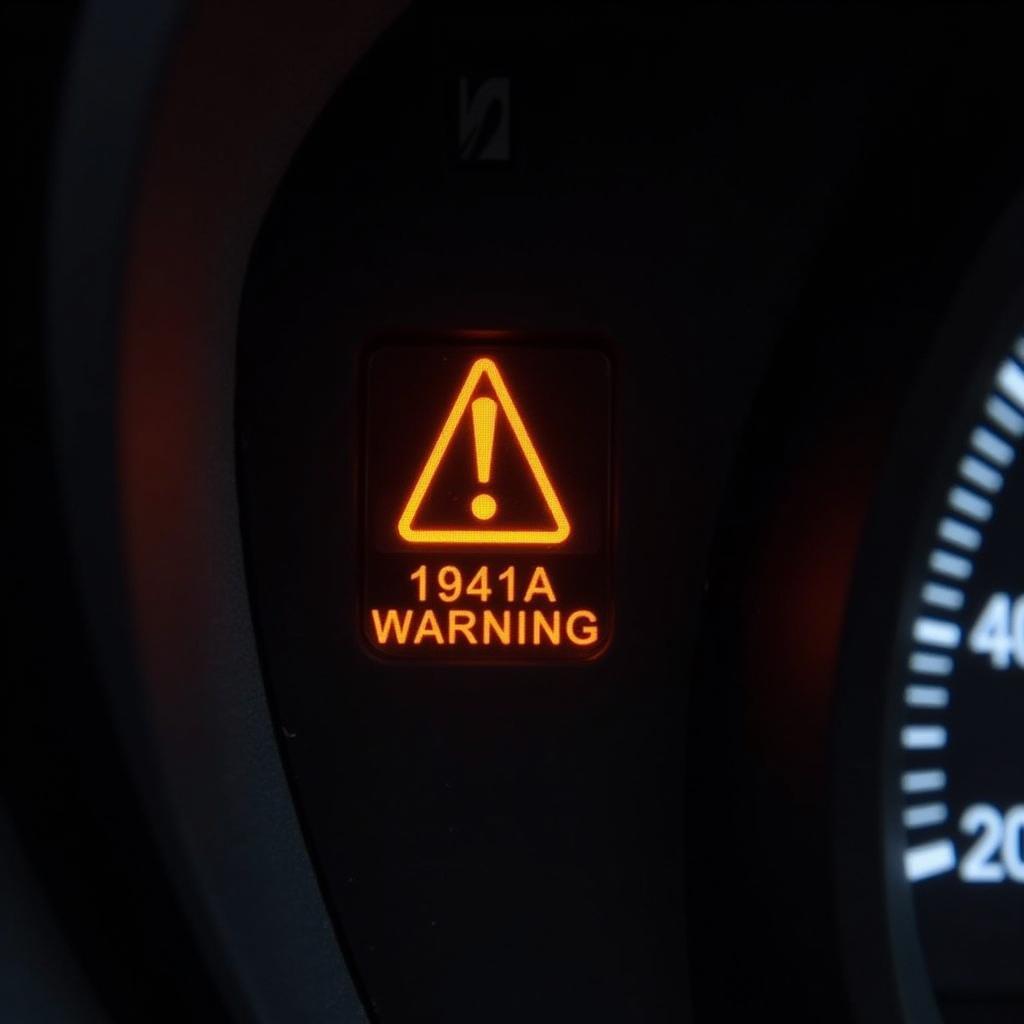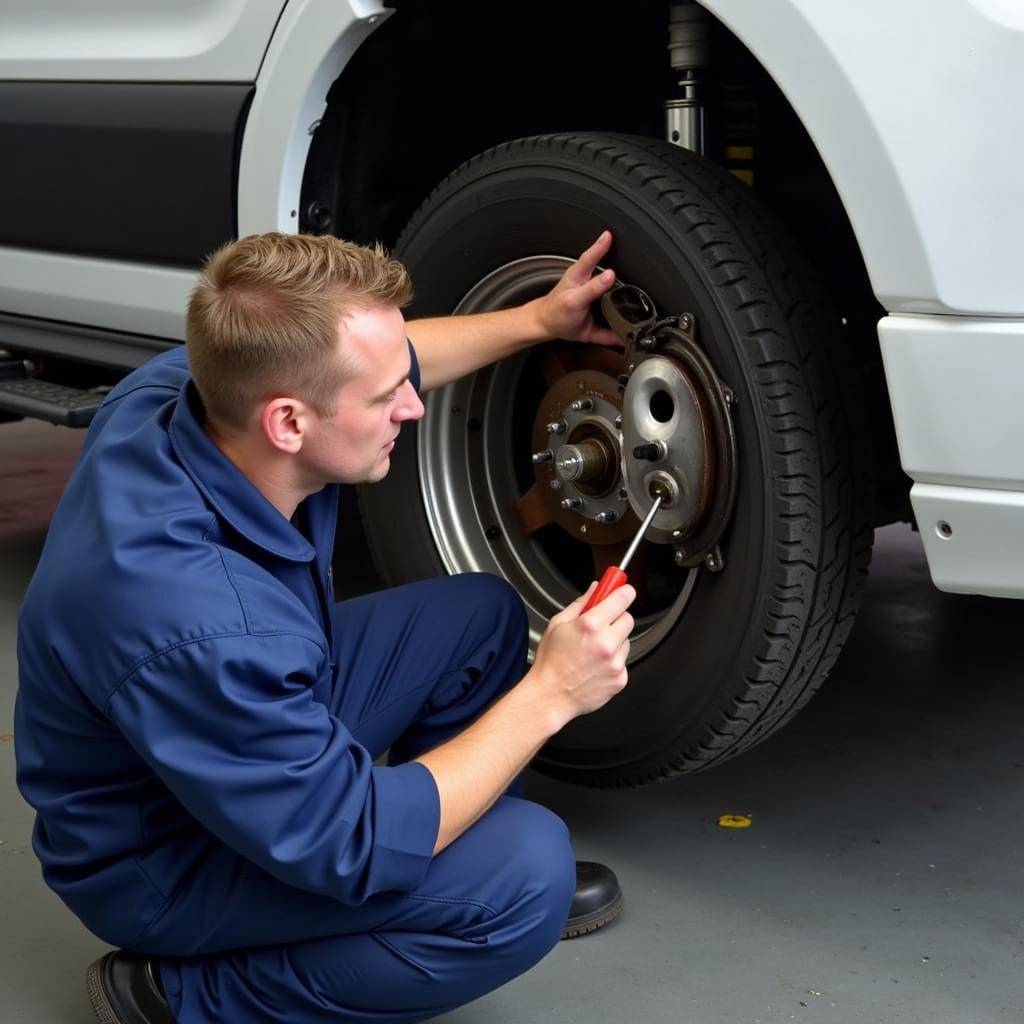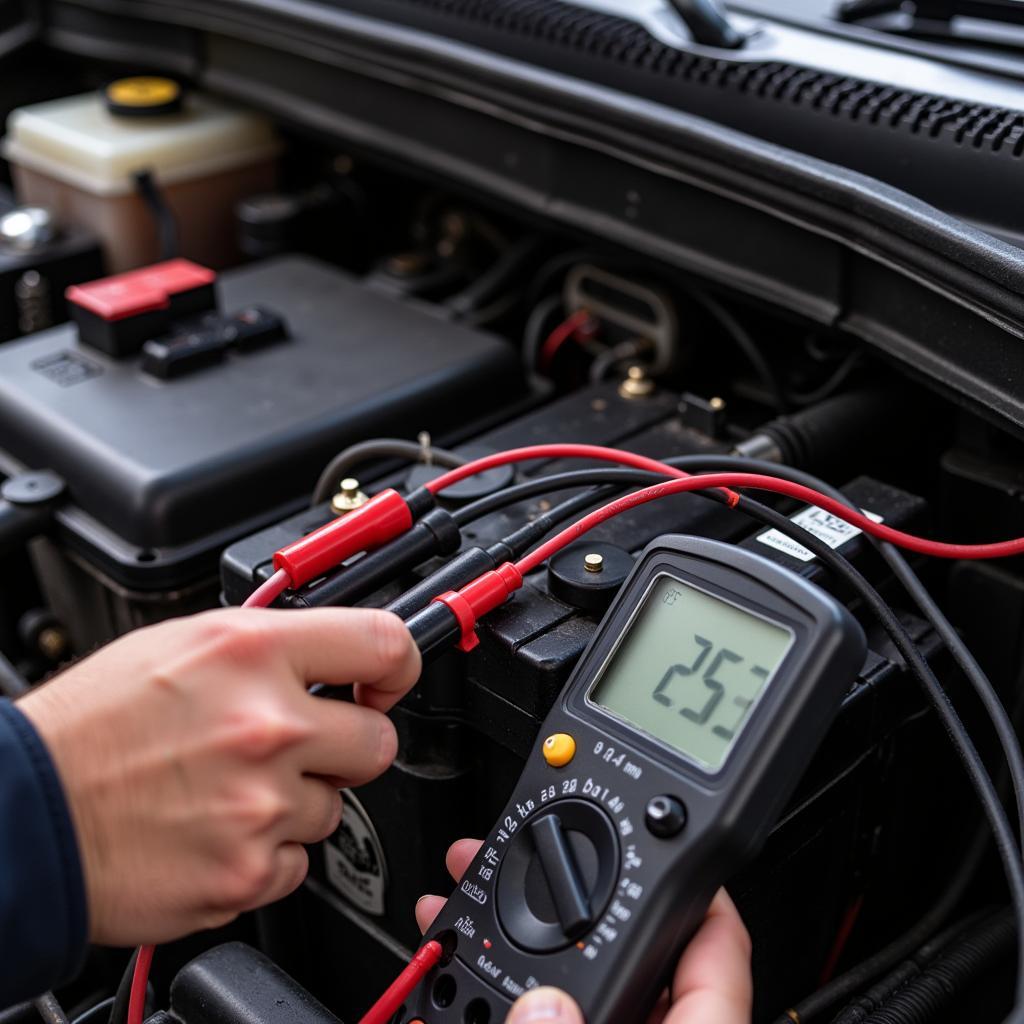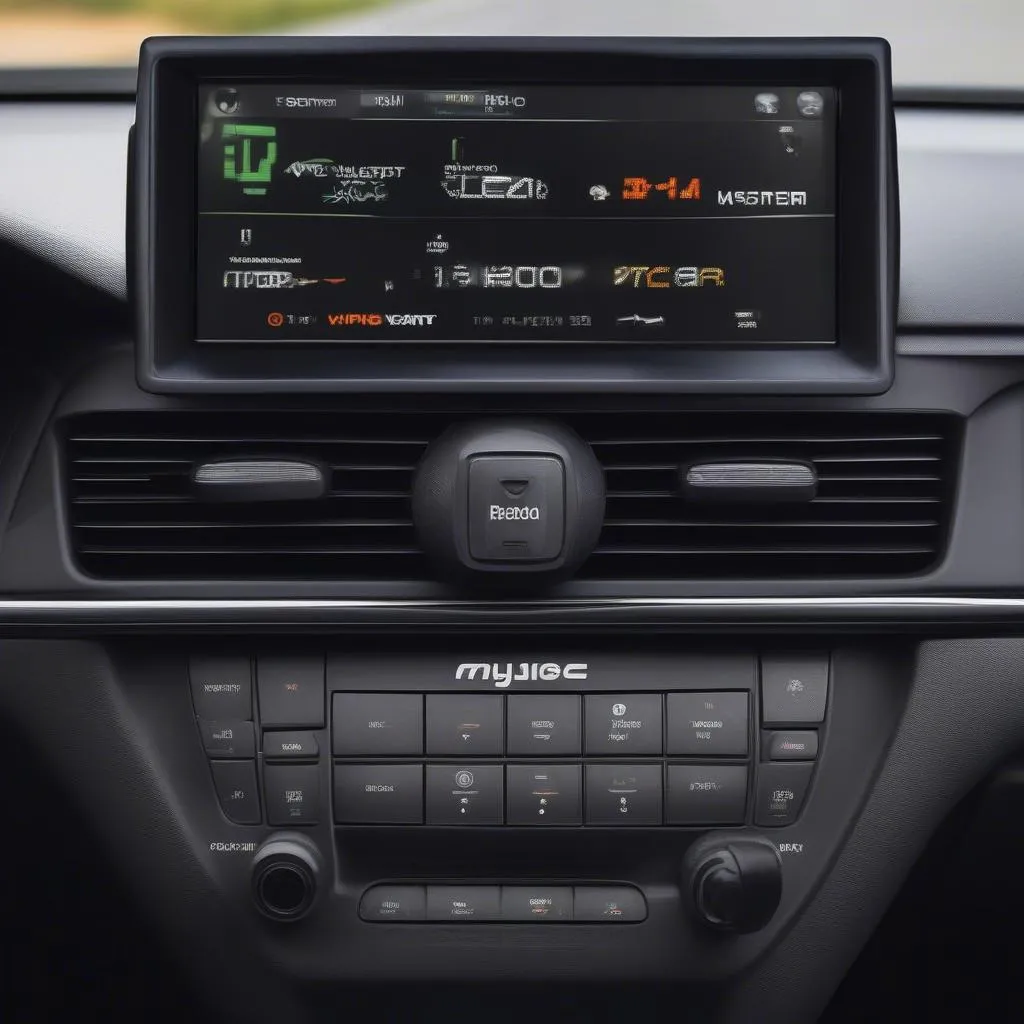The dreaded brake warning light on your MK7 Transit dashboard can send shivers down any driver’s spine. Whether it’s a steady glow or an intermittent flicker, this little light signals potential issues with your braking system that should never be ignored. This comprehensive guide will delve into the common causes of the MK7 Transit brake warning light and provide you with the knowledge to diagnose and address them.
 MK7 Transit Dashboard with Brake Warning Light
MK7 Transit Dashboard with Brake Warning Light
Understanding Your Transit’s Braking System
Before we jump into troubleshooting, it’s crucial to understand the basics of your MK7 Transit’s braking system. It’s composed of several key components working together to ensure safe and efficient stopping power.
Hydraulic System
This system uses brake fluid to transmit force from the brake pedal to the wheels. When you press the pedal, it pressurizes the fluid, activating the calipers and pushing the brake pads against the rotors, thus slowing down or stopping the vehicle.
Electronic Systems
Modern vehicles like the MK7 Transit incorporate advanced electronic systems to enhance braking performance and safety. These include:
- Anti-lock Braking System (ABS): Prevents wheel lockup during hard braking, maintaining steering control.
- Electronic Brakeforce Distribution (EBD): Optimizes braking force to each wheel based on load distribution.
- Electronic Stability Control (ESC): Helps maintain vehicle stability during cornering or slippery conditions.
Common Causes of the MK7 Transit Brake Warning Light
The brake warning light can be triggered by a variety of issues, ranging from simple fixes to more complex problems. Here are the most common culprits:
1. Low Brake Fluid Level
This is the most common and straightforward cause. As brake pads wear down, the brake fluid level in the reservoir naturally drops. If it falls below the minimum mark, the warning light will illuminate.
Solution: Check the brake fluid level in the reservoir and top it up with the recommended brake fluid type specified in your owner’s manual if necessary.
2. Worn Brake Pads
Brake pads are designed to wear down over time. When they reach a certain thickness, a wear indicator will come into contact with the rotor, triggering the warning light.
Solution: Inspect your brake pads. If they’re worn beyond the recommended limit, replace them immediately along with the brake pad wear sensors.
3. Brake Fluid Leak
A leak in the hydraulic system can lead to a drop in brake fluid pressure, triggering the warning light.
Solution: Inspect all brake lines, hoses, and connections for any signs of leaks (wet spots, drips). If a leak is detected, it’s crucial to have it repaired by a qualified mechanic immediately.
4. Faulty ABS Sensor
The ABS system relies on sensors at each wheel to monitor wheel speed. A malfunctioning sensor can disrupt the system and activate the brake warning light.
Solution: A diagnostic scan tool can pinpoint a faulty ABS sensor. The sensor will need to be replaced, and the system will need to be recalibrated.
5. Issues with the Master Cylinder
The master cylinder plays a vital role in pressurizing the brake fluid. If it fails, it can lead to a loss of braking power and illuminate the warning light.
Solution: Diagnosing master cylinder issues requires expertise. If you suspect a problem, consult a qualified mechanic.
6. Electrical Faults
Electrical issues, such as a faulty brake light switch or wiring problems, can also trigger the brake warning light.
Solution: Thoroughly check the wiring and connections related to the braking system. If you’re unable to identify the problem, seek assistance from a qualified auto electrician.
What to Do When the MK7 Transit Brake Warning Light Comes On
If the brake warning light illuminates while driving:
- Stay Calm: Don’t panic.
- Assess Braking Performance: Carefully test your brakes.
- Pull Over Safely: Find a safe location to pull over.
- Inspect Brake Fluid Level: If safe to do so, check the brake fluid level.
- Seek Professional Help: If the light persists or you notice any braking abnormalities, do not continue driving. Contact a qualified mechanic or roadside assistance immediately.
Preventative Maintenance for a Healthy Braking System
Regular maintenance can help prevent brake warning light issues:
- Regular Brake Inspections: Have your brakes inspected at least once a year or as recommended in your owner’s manual.
- Timely Brake Fluid Flush: Replace brake fluid every 2-3 years or as recommended.
- Quality Brake Pads: Invest in high-quality brake pads and rotors for optimal performance and longevity.
- Address Issues Promptly: Don’t ignore any signs of brake problems, such as unusual noises or vibrations.
 Mechanic Inspecting MK7 Transit Brake System
Mechanic Inspecting MK7 Transit Brake System
Conclusion
The MK7 Transit brake warning light serves as a crucial safety indicator. Understanding its common causes empowers you to take appropriate action, ensuring your safety and the longevity of your vehicle. By following the troubleshooting tips and preventative measures outlined in this guide, you can address brake warning light issues effectively and maintain a healthy braking system for worry-free driving. Remember, if you’re ever unsure about any aspect of your vehicle’s braking system, consult a qualified mechanic for expert diagnosis and repair.


